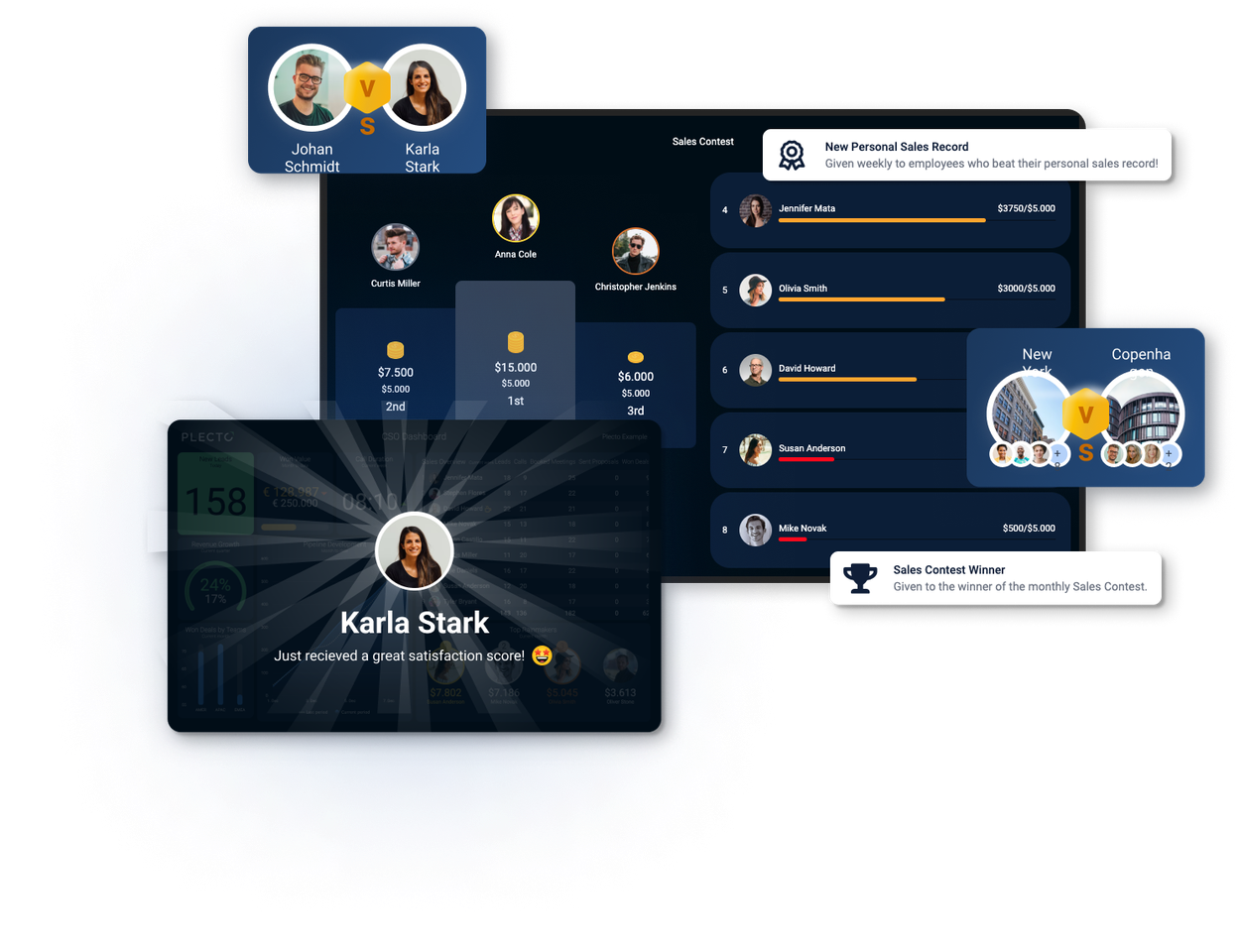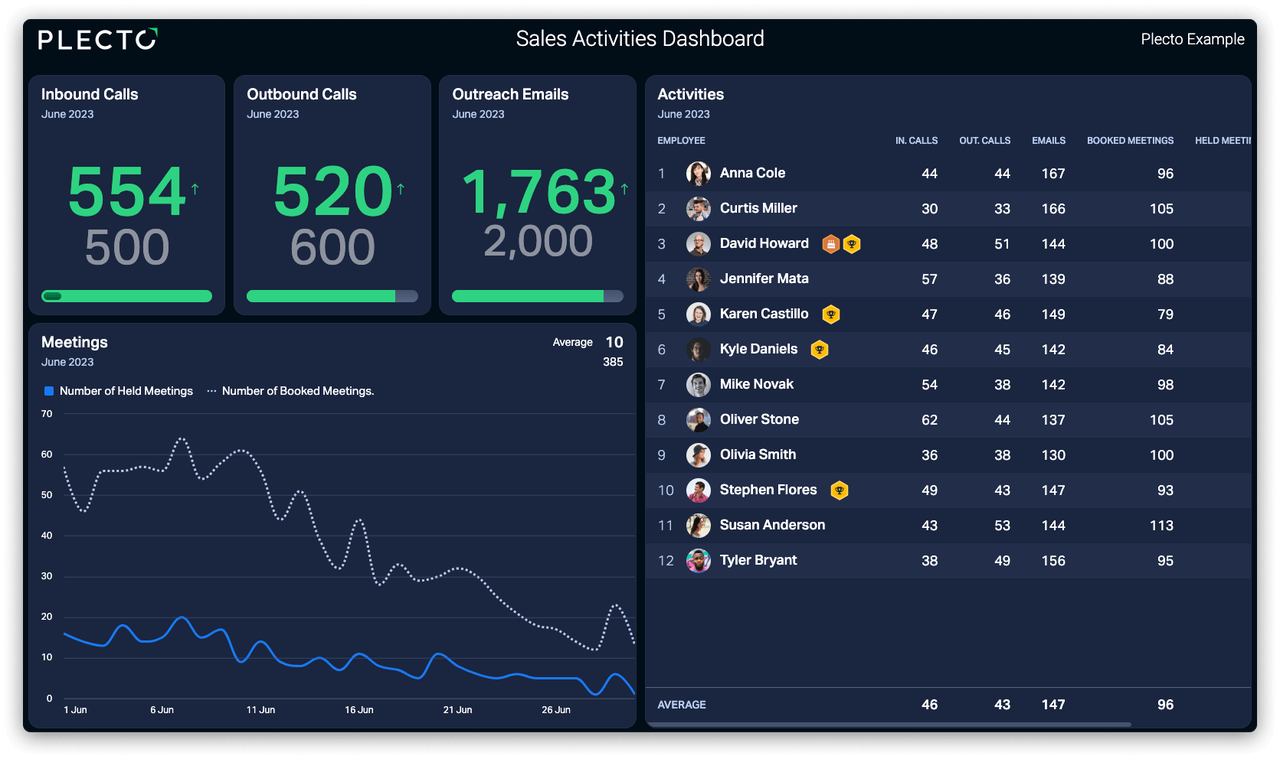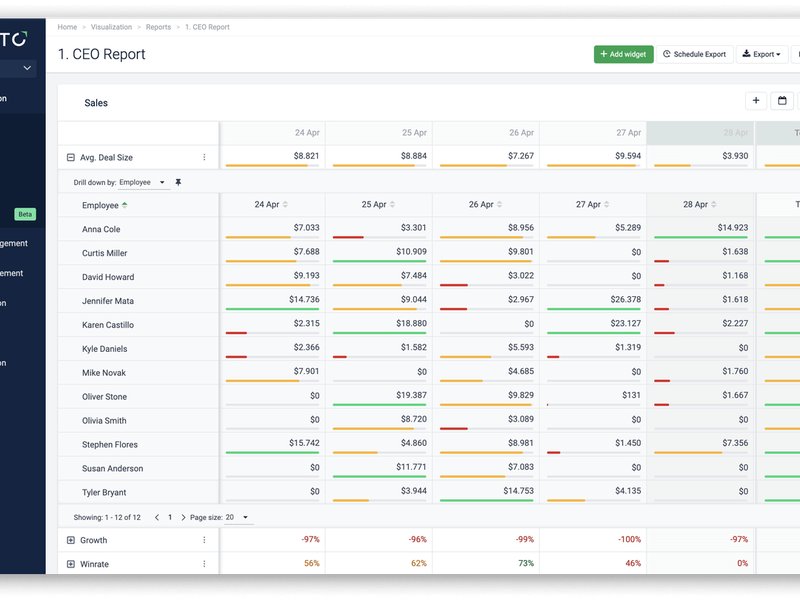Modern business leaders understand that good data and actionable insights can define the future of their business. Whether you’re trying to boost team motivation or if you’re trying to improve customer retention rates, or achieve any other goal–having the right insights will be key.
Let’s take a look at how you can turn your data into actionable insights to move your business forward.
What are actionable insights?
Actionable insights are specific and valuable pieces of information derived from data analysis. They go beyond raw data and provide clear guidance for decision-making in your organization, complemented by clear visualization, forecasting, and concrete steps and goals.
These insights uncover meaningful patterns, correlations, and trends in the data and offer practical recommendations to your data analysts and teams. You can then use these recommendations to implement specific actions to solve specific problems or capitalize on opportunities in your market.
Actionable insights can be a combination of discrete and continuous data that offers a deep dive into the why as well as the how behind specific internal and external trends. You can use this to drive internal change in your organization or to capitalize on external opportunities in the market and adapt quickly to market shifts.
With that in mind, here are the practical steps you can take to turn that data into actionable insights.
1. Define your goals
First things first, keep in mind that the quality of your insights will depend entirely on your ability to set clear goals, define your objectives, and understand what it is you’re trying to measure.
The most important aspect of this process is to ensure that everything you’re measuring is relevant to a specific goal and a specific team. Make sure that different teams and departments have their key goals and objectives in order to increase sales, for example, or craft better marketing strategies that truly resonate with your audience.
To do this, you need to understand the overarching business goals and then delve deep into the data generated by each team. Once compiled, pool all the data together to generate actionable business insights.
Remember, desired goals don't necessarily need to be sales oriented. For example, data collected from cloud-based access control devices could be used to optimize building management systems, or inform the allocation of limited security resources. If data can be collected, related processes can usually be improved.
2. Use the right tools
In order to generate insights that are relevant to your teams without missing any opportunities in the competitive market, you need to use the tools that will help you minimize costs and maximize productivity. Start by minimizing software bloat, which means that you should cut extraneous tools from your tech stack.
You can start by automating data collection and cost-management processes. Consider using cloud cost management tools to minimize cloud spending while improving data storage, security, and collaboration between teams.
Because the majority of the tools you use to collect, manage, and transform data into insights are cloud-based, it’s important to make sure they’re the right tools for you.
Build your first dashboard.
Start your 14-day free trial today
3. Put your data in the right context
Numbers on their own don’t mean much without the right context and background. If you don’t put your data in the right context, you’re just presenting numbers that don’t have the narrative needed to turn them into actions.
In order to put your data into context, you need to explain the why, when, who, what, and how. For example, who are the people you’re targeting, what are their pain points, or how this data correlates to their needs.

4. Visualize your data
Visualization is the key to efficiently and effectively presenting data and is crucial in driving organizational change in your organization.
Speaking of making data easy to follow for all your teams, this is your opportunity to centralize all the data into a single source of truth. A single source of truth means that you’re pooling all the data from various sources into a centralized location, offering a single reference point for everyone involved. This ensures that everyone is looking at and working off of the same information.
One of the most important capabilities you should have here is real-time visualization. Visualizing your data in real time gives your teams and the decision-makers in your company the incentive they need to act - now.
There is no better way to act on data than when it’s fresh, and real-time visualization makes new data digestible, allowing you to take immediate action on your performance.
5. Gamify your data
Another great trend that is transforming the way modern teams work with data is through gamification. In sales, for example, gamification can play an important role in motivating teams and helping them reach their goals.
Gamification is a great way to use data to unlock that competitive spirit in your team and truly empower your employees to achieve better results. It not only brings your data to life, but also encourages employees to take accountability for their own data.

Don’t know where to start when it comes to gamifying your data? This is where Plecto comes in handy. Packed full of gamification features such as contests, notifications and a Reward Store, you can easily gamify your data so that it empowers your team and inspires even better performance.
While this may all sound like fun and games there is actually a whole lot more to it. For instance, when you set the right KPIs, you can then use gamification to make these numbers and goals more relevant to your sales team, and give them a sense of ownership over the KPIs they set for themselves, as well.
6. Discuss the insights and adapt
Keep in mind that good insights are only as good as your ability to discuss them, interpret them, and act on them with your team. Make your data transparent by ensuring that your data analysts share their findings across your entire company.
Cost analysis will be the key to driving business growth and financial efficiency. For example, you can visualize your spending and financial data to spot inefficiencies as well as opportunities. If you’re using cloud-based servers to run your operation, the data will be instrumental in AWS cost optimization and reducing the load on your cloud applications while maximizing efficiency.
When it comes to interpreting the data with your teams, you need to talk to people who not only understand the data, but are able to communicate their needs based on the insights in order to guide the management towards positive change. This way, you’ll be able to innovate much more quickly in a competitive industry.
Wrapping up
There is a lot of data flowing in the online and offline worlds, and it's not enough simply to capture it in time–you also need to transform it into useful and actionable insights. Be sure to use these tips to organize, structure, visualize, and present your data in a way that will guide your teams and help you take your business forward to new heights.
Nikola Sekulic is a seasoned brand developer, writer, and storyteller. Over the last decade, Nikola has worked on various marketing, branding, and copywriting projects - crafting plans and strategies, writing creative online and offline content, and making ideas happen. When he's not working for clients around the world, he's exploring new topics and developing fresh ideas to turn into engaging stories for the online community.




